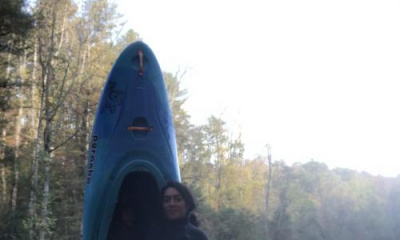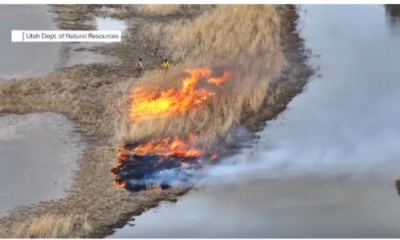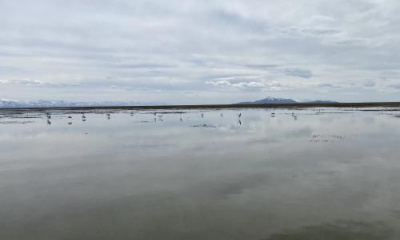OGDEN — It’s not just the declining water level.
Some of the rocky structures in the Great Salt Lake — microbialites — are also telling the story of the water body’s worrisome decline. The upshot of the exposed rocks, warns a Weber State University researcher, could be fewer brine flies for the birds that rely on the bugs for sustenance, eroding the lake ecosystem.
“If we get fewer brine flies … birds lose a critical food source. If the Great Salt Lake is the gas station pit stop for migratory birds, the microbialites are the ones producing most of the gasoline,” said Carie Frantz, an associate professor of earth and environmental sciences at Weber State. The microbial community provides food for brine fly larvae and brine shrimp, but as the rocky structures — microbial mats, really — emerge into air with the declining lake level, they bleach, turn from green to white, and aren’t as a potent contributor to the food chain.
Frantz has been researching microbialites in the Great Salt Lake since 2008 and just finished her most recent stint with a group of Weber State students last Friday. One of the grim takeaways from the most recent scientific foray, she said, is that increasing expanses of microbialites in the lake are being exposed as the water level dips.
In 2013, she visited the lake hoping to study and sample microbialites, “but they were too deep to locate at the sites we visited — nearly all of them were still submerged,” she said. By 2016, microbialites around Antelope Island “were starting to peek out of the water” and the situation has only worsened since then.
At the low lake level last year, just below 4,190 feet elevation, around 54% of the microbialite area of the South Arm of the lake was exposed, she said. If the lake elevation dips below 4,189 feet this summer “which is likely,” around 66% of microbialites of the South Arm will be exposed.
“At the site on the north end of Antelope Island where I do most of my work, it’s closer to 80% exposure,” she noted.
It may be wonky stuff. In fact, Frantz expresses perhaps more alarm at the health threat posed by increasing airborne dust as the Great Salt Lake bed is increasingly exposed. But the microbialite research also underscores the lake’s dramatic transformation, adding to the urgency political and scientific leaders have placed on getting more water back into the Great Salt Lake.
“We’ve really entered uncharted territory in terms of lake level and salinity. It’s at a really scary tipping point right now and we don’t know what’s going to happen,” Frantz said.
Microbialites can recover with the return of a water covering, but the most recent research seems to indicate they aren’t quite as resilient at the higher saline levels common of late in the Great Salt Lake water. Weber State students Maggie Nguyen, Jared Gibby and Cody Ellsworth took part in the recent research with Frantz and offered details of the findings at a presentation last week at Weber State.
“They’re stressed. They’re not recovering as fast,” Ellsworth said.
“At some point,” Frantz went on, the microbialites “might not be able to bounce back, at least as quickly.”
Indeed, more water is the solution to the problem of lost potency of the increasingly exposed microbialites. “We need to fill the lake back in,” Frantz said.
Fossilized microbialites are among the oldest indicators of life on the plant, going back more than 3.5 billion years, Frantz said. Her initial research focused on what they can say about the environment of the past.
“When I started seeing them getting exposed, bleaching out, and realized how important they were to Great Salt Lake’s ecosystem, my research changed focus to trying to understand what’s happening to them right now,” she said.







